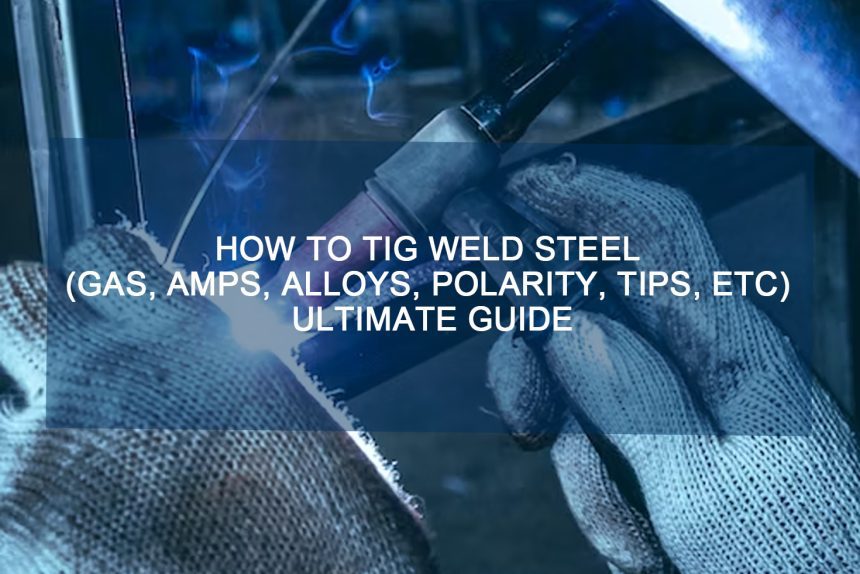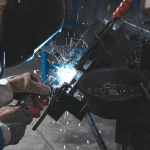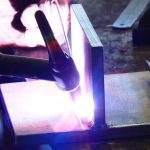TIG welding, also known as Tungsten Inert Gas welding, is a highly valuable method for joining metals, especially steel. This technique involves heating the metals using an arc created between the tungsten electrode and the base metal.
How to TIG Weld Steel
Welding Town
(Gas, Amps, Alloys, Polarity, Tips, etc)
Ultimate Guide
How to Avoid Bubbles
If bubbles form during the TIG welding process, it indicates a leak, and you must replace the defective components to ensure proper welding. To avoid the formation of bubbles in your TIG weld, it is essential to be mindful of several critical factors. For instance, closely monitor the voltage and arc length during the welding process. Proper control of these parameters can help prevent the occurrence of bubbles and ensure a successful weld. Additionally, ensuring the integrity of the welding equipment and using high-quality components is crucial in achieving bubble-free TIG welds.
Is Porosity a Big Issue?
Porosity in TIG welding occurs when gas or contaminants are absorbed into the weld puddle. This leads to a weak and bubble-filled weld that fails to meet the required standards and compromises the integrity of the project, ultimately leading to potential failure. If porosity is detected in your weld, it is crucial to redo the welding to ensure a sound and reliable joint.
To prevent porosity in TIG welding, you can take the following measures:
- Keep the material surface clean
- Check the gas flow
- Take a look at your equipment
- Check your workspace conditions
- Tips for Tig Welding on Steel
TIG welding, among the various options like oxyacetylene, stick, and MIG, stands as one of the most versatile welding methods available. It can be used to weld materials such as titanium, copper, and even dissimilar metals, making it valuable for intricate welds on round or curved surfaces.
In TIG welding, an arc of electricity jumps from the non-consumable tungsten electrode to the metal surfaces being welded, typically steel or aluminum. This process is known for its precision and capability to produce high-quality welds. While it may be slower compared to other methods, the results are top-notch.
TIG welding is commonly used for welding metals beyond common steel, tackling challenging weld joints, and performing small, precise welds. It is a preferred choice when welding requires utmost accuracy and control.
Also known as gas tungsten arc welding, TIG welding utilizes a non-consumable tungsten electrode to provide ample current for the welding job. The use of filler metal is optional, depending on whether the welding is autogenous or not. Moreover, a shielding gas is employed in TIG welding to protect the welding process from environmental contamination and ensure a clean weld.
TIG welding, among the various options like oxyacetylene, stick, and MIG, stands as one of the most versatile welding methods available. It can be used to weld materials such as titanium, copper, and even dissimilar metals, making it valuable for intricate welds on round or curved surfaces.
In TIG welding, an arc of electricity jumps from the non-consumable tungsten electrode to the metal surfaces being welded, typically steel or aluminum. This process is known for its precision and capability to produce high-quality welds. While it may be slower compared to other methods, the results are top-notch.
TIG welding is commonly used for welding metals beyond common steel, tackling challenging weld joints, and performing small, precise welds. It is a preferred choice when welding requires utmost accuracy and control.
Also known as gas tungsten arc welding, TIG welding utilizes a non-consumable tungsten electrode to provide ample current for the welding job. The use of filler metal is optional, depending on whether the welding is autogenous or not. Moreover, a shielding gas is employed in TIG welding to protect the welding process from environmental contamination and ensure a clean weld.
Tig vs MIG Welding on Steel
Currently, TIG welding is widely used due to its ease and straightforward application. Although it is slower than other processes like MIG welding and shielded metal arc welding, TIG welding offers welders greater flexibility and control over the entire welding process, resulting in long-lasting and durable welds.
TIG welding is highly versatile, capable of welding a wide range of materials. Additionally, it provides excellent resistance against corrosion, making it a favorable choice for such applications.
TIG and MIG welding on steel exhibit several differences, with the main distinction being the way the arc is utilized. In MIG welding, a feed wire continuously moves through the gun, creating the spark necessary to melt the material and form the weld. On the other hand, in TIG welding, long rods are used to directly fuse two metals together. MIG welding is more efficient for thicker metals and faster welding, while TIG welding is ideal for thinner materials. TIG welding is well-suited for stainless steel, mild steel, and aluminum.
How to Tig Weld a Steel Pipe
Currently, achieving a perfect finishing after welding requires the use of weld metal. To clean the metal surface, a wire brush, preferably made of stainless steel or aluminum, can be utilized. Clamping helps maintain the position of the weld metal during welding, and applying anti-spatter spray prevents welding drips, ensuring a smooth surface.
Safety preparation is of utmost importance when TIG welding steel pipes or any other material. Proper safety measures, such as wearing dark helmets, welding gloves, toe shoes, and long-sleeved shirts or jackets, are essential to prevent accidents like eye damage or skin burns. Cleaning the welding helmet before starting the task enhances visibility, and additional lighting can be used to improve the process.
For TIG welding on steel square tubing, consider these tips: clean the mill scale, ensure squareness of the materials, and use at least three tack welds on each joint. When welding the outside corner, start from the inside and work your way outside to minimize distortion. Sometimes, using a lay wire technique can make the welding process easier.




![12 Different Types of Welding Processes [The Definitive Guide] 6 12 Different Types of Welding Processes [The Definitive Guide]](https://www.021208.com/wp-content/uploads/2025/01/12-Different-Types-of-Welding-Processes-The-Definitive-Guide-150x150.jpg)







